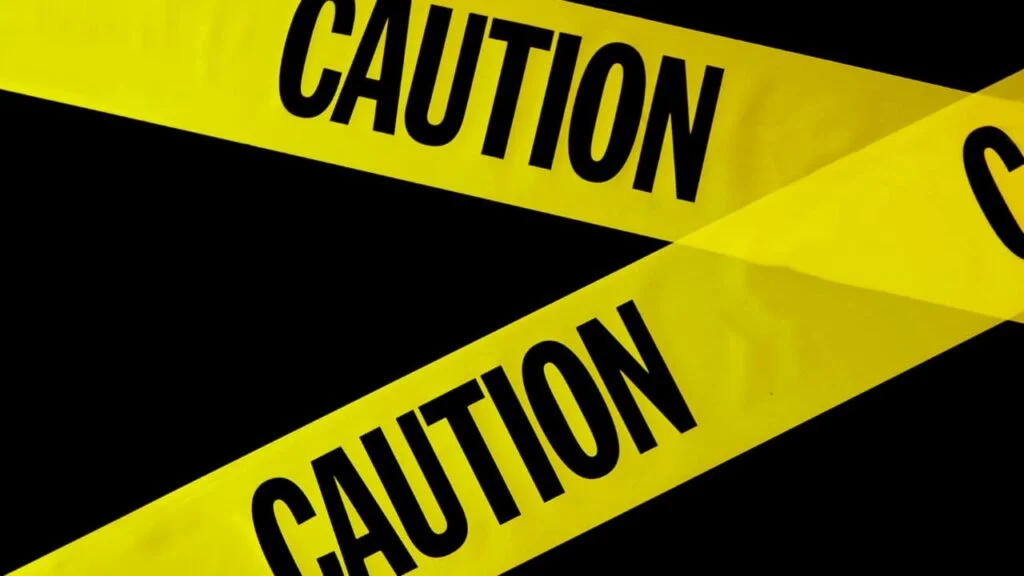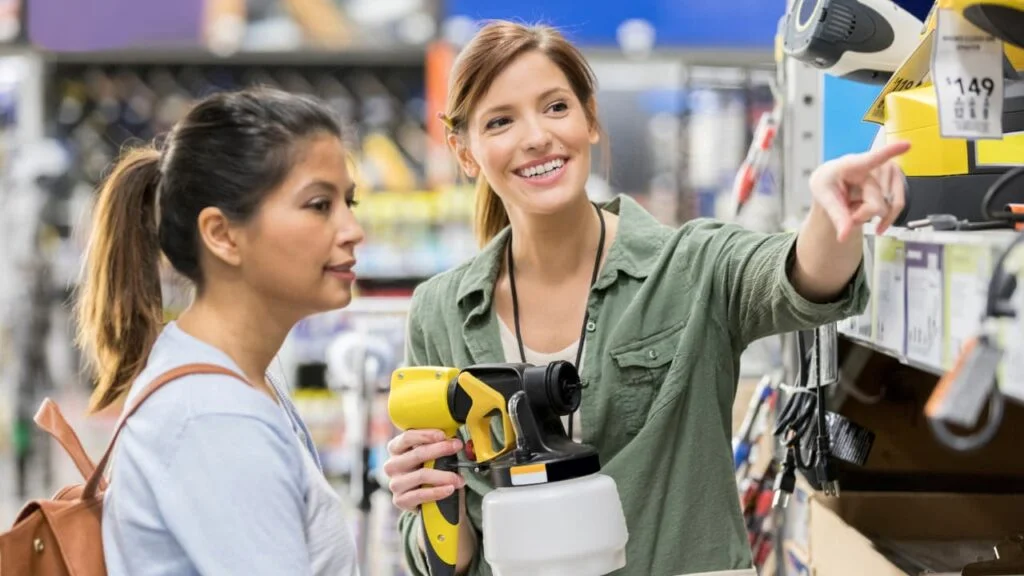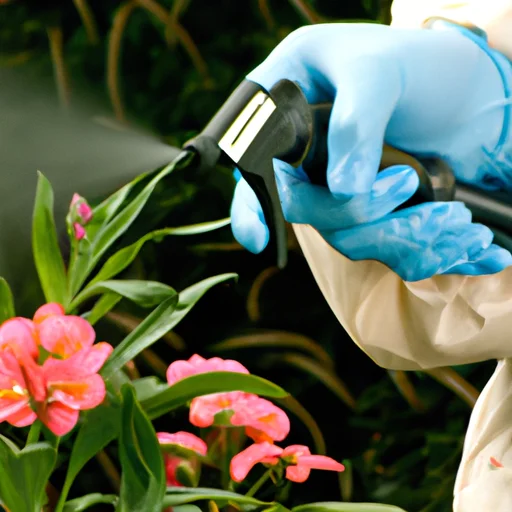Sprayers can be incredibly useful tools for various tasks, from gardening to painting. However, it’s essential to prioritize safety when using these powerful machines. This article will guide you through the most important precautions to take when operating a sprayer, ensuring that you can complete your tasks efficiently while keeping yourself and those around you safe. By following these guidelines, you can confidently tackle any spraying project with peace of mind.
What Safety Precautions Should I Take When Using A Sprayer?
Table of Contents
Choosing the Right Sprayer
When it comes to choosing the right sprayer for your needs, there are several factors to consider. First, think about the type of sprayer that would be most suitable for your specific task. There are different types available, such as handheld sprayers, backpack sprayers, and wheeled sprayers. Each type offers its own advantages and disadvantages, so it’s important to choose one that fits your requirements.
In addition to the type of sprayer, you should also check the capacity and pressure rating. The capacity refers to the volume of liquid that the sprayer can hold, while the pressure rating indicates how forcefully the liquid can be sprayed. It’s important to ensure that the sprayer has enough capacity to cover the area you need to spray and that the pressure rating is suitable for the type of liquid you will be using.
Lastly, it’s crucial to ensure that the sprayer is in good condition before using it. Inspect the sprayer for any leaks, cracks, or other signs of damage. Make sure that all components, such as the nozzle and wand, are functioning properly. A faulty sprayer can result in poor spray coverage or even accidents, so it’s important to address any issues before starting your task.
Preparing for the Task
Before you begin using the sprayer, there are a few important steps to take to ensure your safety. First and foremost, read and follow the user manual provided by the manufacturer. The manual will provide specific instructions on how to use the sprayer safely and effectively. It may also include important information about maintenance and troubleshooting.
Next, you must wear appropriate protective gear. This typically includes safety glasses or goggles, gloves, and a mask or respirator. These items will protect you from potential hazards such as chemical splashes or inhalation of fumes. Remember, safety should always come first.
Lastly, inspect the work area where you will be using the sprayer. Remove any obstacles or hazards that could interfere with your spraying task. Ensure that there are no nearby plants or animals that could be harmed by the sprayer. Taking these precautions will help ensure a safe and successful spraying experience.
Mixing and Handling Chemicals
When working with a sprayer, it’s important to take proper precautions when mixing and handling chemicals. This will help protect your health and prevent any potential accidents or damage.
First, always read the labels of the chemicals you will be using and follow the instructions provided. The labels contain important information about the proper handling and application of the chemicals. Be sure to wear the recommended protective gear and follow any specific mixing instructions.

Using proper mixing techniques is crucial to ensure the effectiveness and safety of the chemicals. Follow the recommended ratios and measurements provided by the manufacturer. Use clean and appropriate containers for mixing the chemicals, and always mix in a well-ventilated area to avoid inhaling any fumes.
Avoid direct contact with chemicals whenever possible. Wear gloves and other protective gear to minimize the risk of skin exposure. If any chemicals do come into contact with your skin or eyes, rinse immediately with water and seek medical attention if necessary. Always remember to handle chemicals with care and respect their potential dangers.
Spraying Safely
Spraying safely involves considering various factors, such as weather conditions, proper spray technique, and keeping a safe distance from others.
Before using a sprayer, check the weather conditions. Avoid spraying on windy days, as this can lead to spray drift and unintended damage to nearby plants or areas. It’s also important to avoid spraying during extremely hot weather, as this can cause the chemicals to evaporate too quickly and become less effective.
Proper spray technique is crucial for even and efficient coverage. Hold the sprayer at a consistent height and distance from the surface being sprayed. Move in a steady and controlled manner, ensuring that the spray is evenly distributed. This will help prevent overapplication in some areas and underapplication in others.
Maintain a safe distance from others while spraying. This is particularly important if you are using chemical-based sprays, as inhaling the fumes or coming into direct contact with the spray can be harmful to others. Clear the area of any pets, children, or individuals who may be sensitive to the chemicals.
Avoiding Environmental Damage
Using a sprayer responsibly means taking steps to avoid any potential harm to the environment. Here are some important precautions to consider:
Protecting water sources is essential. Avoid spraying near bodies of water, such as lakes, rivers, or ponds. The chemicals used in the sprayer can contaminate the water and harm aquatic life. Ensure that the spray does not run off into storm drains or other outlets that lead to water sources.
To prevent spray drift, be mindful of the wind direction and adjust your spraying technique accordingly. Aim the nozzle of the sprayer in the opposite direction of the wind to minimize the chances of the spray drifting off target. This will help prevent unintended damage to nearby plants, crops, or neighboring properties.
Dispose of any leftover chemicals responsibly. Follow local regulations for the proper disposal of chemical containers and unused spray mixtures. Avoid pouring chemicals directly into drains, sewers, or onto the ground. By disposing of them correctly, you can help prevent environmental contamination and protect the ecosystem.
Cleaning and Maintenance
After each use, it is important to clean the sprayer thoroughly. This will help prevent cross-contamination between different chemicals and ensure the longevity of the sprayer. Follow these steps for proper cleaning:
First, empty any remaining liquid from the sprayer and rinse it with clean water. Fill the tank with water and flush it through the sprayer to remove any residue. Repeat this process until the water runs clear.
Next, disassemble the sprayer and clean each component separately. Use a brush or sponge to scrub away any remaining residue. Rinse each part with clean water and allow them to air dry.
Once the sprayer is clean, store it in a safe and dry location. Avoid exposing the sprayer to extreme temperatures or direct sunlight, as this can damage the materials. Store any chemicals separately and ensure they are tightly sealed to prevent leaks or spills.
Regularly inspect and maintain the sprayer to identify any signs of damage or wear. Replace any worn or damaged parts promptly to ensure the safety and effectiveness of the sprayer. By taking these cleaning and maintenance steps, you can prolong the lifespan of your sprayer and ensure its reliable performance.
In conclusion, using a sprayer safely and responsibly involves several important considerations. By choosing the right sprayer, preparing for the task, handling and mixing chemicals correctly, spraying safely, avoiding environmental damage, and cleaning and maintaining the sprayer, you can ensure a successful and safe spraying experience. Always prioritize safety and take the necessary precautions to protect yourself, others, and the environment. Happy and safe spraying!

Upgrade Your Painting Game
Explore our Introduction To The Best Paint Sprayers guide to take your projects to the next level!

